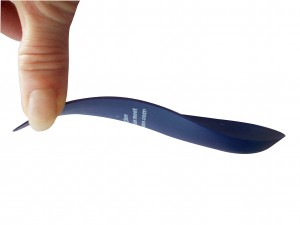
Photo credit: Pixabay / annca
Figure skating can be great fun during the winter months. However, all the twists, turns, quick stops, and blade work can put a lot of stress on your feet, which can lead to foot pain and injury. Achilles tendonitis, plantar fasciitis, bunions, calluses, bursitis, neuromas, and sprains are common foot and ankle conditions that figure skaters may experience. But, by taking a few precautions before you step on the ice, your time figure skating will be more fun and enjoyable.
8 Figure Skating Tips for Foot Pain Prevention
- Wear properly fitted skate boots to prevent injuries and improve performance. Rental skate boots are fine if you don’t ice skate that often. However, if you do plan to ice skate regularly, you’ll need your own pair of figure skates. The most common cause of foot pain is from boots that are too small – especially in young skaters who have outgrown them. Too small boots will feel too tight across the ball of the foot even when the laces are loosened. Skating boots that are too tight can restrict blood flow and nerve sensation to your feet. On the other hand, if your ice skating boots are too big, you may clench your toes while skating. Too big ice skates can cause foot cramps and create a body weight imbalance over your blades. Also if the boots are too large, you may tie your laces too tightly to compensate for this. Laces that are too tight can lead to foot tingling and “lace bite,” which is the inflammation of the tendon on the top of your foot. To reduce these fit problems, have your boots checked by a fitting specialist. Also, refer to the WalkEZStore‘s Shoe Fitting Guide for more information on how to properly fit your footwear.
- Wear tights or socks made of thin, moisture-wicking materials. Never wear cotton socks with your skates since they don’t absorb moisture well. Also, cotton socks tend to be bulky which can cause blisters on your feet.
- Keep your feet and body warm while skating. Dress in layers while skating. Wear a sweater and/or jacket, which can be removed, if needed. Also wear a hat and waterproof gloves. Keep moving to help keep yourself warm while on the rink.
- Properly stretch and warm up your legs and feet prior to skating. Stretch your hamstrings, calves and Achilles tendons. Begin your skating session slowly. Skate around the rink for a few minutes before attempting any spins or jumps.
- Learn proper technique, especially if you plan on skating regularly. Improper technique, like wobbling on your skates, may lead to foot pain.
- Rest if you experience any foot, ankle, or leg swelling, inflammation or pain. Elevate your feet and apply ice to the affected area. If your pain or swelling persists or gets worse, stop all skating activities. See your doctor for evaluation and treatment.
- If you have any foot conditions, like corns, calluses, bunions or hammertoes, or medical conditions that affect your circulatory system, see your doctor for an evaluation before you start skating.
 Wear custom orthotics, like the ezWalker® Custom Fit Orthotics, to help improve your skate boot fit and comfort. The ezWalker® Custom Orthotics are custom made to the shape of your individual feet. They provide proper bio-mechanical support of the medial, lateral and trans-metatarsal arches of your feet. Also, ezWalker® Custom Orthotics can help control excessive pronation or when your feet roll inward. Excessive pronation can cause pain, especially in rigid footwear like skating boots. Alternatively, if you have high arches or supinate (which means your feet roll outward), ezWalker® Custom Orthotics can evenly redistribute your weight over your feet and ankles, reducing pain and helping to prevent injuries.
Wear custom orthotics, like the ezWalker® Custom Fit Orthotics, to help improve your skate boot fit and comfort. The ezWalker® Custom Orthotics are custom made to the shape of your individual feet. They provide proper bio-mechanical support of the medial, lateral and trans-metatarsal arches of your feet. Also, ezWalker® Custom Orthotics can help control excessive pronation or when your feet roll inward. Excessive pronation can cause pain, especially in rigid footwear like skating boots. Alternatively, if you have high arches or supinate (which means your feet roll outward), ezWalker® Custom Orthotics can evenly redistribute your weight over your feet and ankles, reducing pain and helping to prevent injuries.
By following these tips, you’ll better enjoy your figure skating experience. And you’ll help prevent or reduce skating injuries and foot pain.
How to Contact the WalkEZStore for More Information
To contact the WalkEZStore for more information about ezWalker® Custom Fit Orthotics, click here. To order your pair of ezWalker® Custom Fit Orthotics, visit our online shop.
Because … when your feet feel good, you feel good.®
Disclaimer: The information included in this article is for educational purposes only. It should not be used as a substitute for professional medical advice, diagnosis or treatment.

